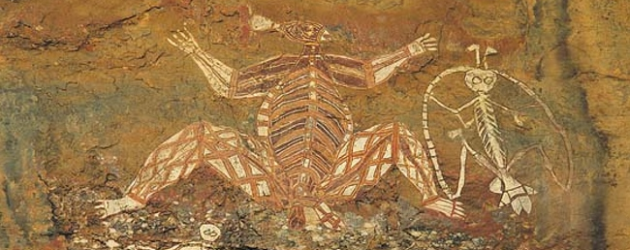Australian Aboriginal’s have always been linked with rock art and rock paintings, in time, popular culture and fine art. The Aboriginal Rock Art engraved carefully into the sandstone around Syndey, New South Wales epitomises this phenomena. Whilst even a few examples may often be considered of historical significance, there are in fact many thousands of beautiful rock engravings and carvings to be found in the region; however their location is often not publicised to prevent vandalism to these ancient art works and also preserve their status as sacred sites in the minds of Indigenous Australians.
Aboriginal Rock Art shares many parallels with other examples from around the World, however the style of these petro-glyphs is completely unique even within mainland Australia. The engravings themselves were the work of Aboriginal Artists whom have occupied the region for over twenty-five thousand years, however the age of these art works does vary from one region to another. For example, the Bidjigal Reserve in North-West Sydney has examples of rock carvings from roughly ten thousand BC. However, some works have been found in the Blue Mountains region of Sydney which are thought to be much older, possibly dating from up to twenty-thousand BC. The dates assumed for the production of the work are also based on the content of the art. The Aboriginal art of ancient Australia is known as ‘simple figurative’ , featuring simplistic representations of ceremonies and events, more often focused on telling a story rather than focusing on detail and form. However, it is reported that some engravings have been found which feature European sailing ships and vessels, meaning that they can’t be more than a couple of hundred years old. The problem of dating the Aboriginal Rock Art is further complicated due to the re-grooving which can happen over the centuries. The rock will often be re-worked as the sandstone is eroded in order to preserve the work, however this can often result in modifications or suggest that the origin of the engraving is more recent than it actually is. Another method to identify the age of rock art is through the depiction of ancient and extinct animals, such as Thylacines, with examples in the Kakadu National Park supporting this hypothesis and its use in establishing the age of Aboriginal Rock Art.
This series of articles on the history and production of Aboriginal Rock Art is continued in the following posts:
